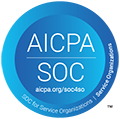On January 6, 2015, CMS released an updated version of the WCMSA Reference Guide (COBR-Q1-2015-v2.3). A complete list of the changes can be found in Section 1.1 (p. 7) of the Guide and include language changes and clarifications as follows:
- Corrected reference from 42 CFR 411.46 to Section 1862(b)(2) of the Social Security Act.
- Clarified reference to costs related to the workers’ compensation claim, rather than the compensable injury.
- Clarified reference to future medical items and services as “Medicare covered and otherwise reimbursable.”
- Clarified that CMS approves the WCMSA amount, not the WCMSA, upon submission of a request.
- Correspondingly, clarified language referring to submission of a proposed WCMSA amount, rather than a WCMSA proposal.
- Restated the comparison of fee-schedule vs. full-and-actual-costs pricing as the basis of pricing the proposed amount, rather than the basis of payment from an approved WCMSA account.
- Clarified attestation vs. accounting wording.
- Clarified procedural results when Medicare is not provided with information in response to a development request.
- Removed the word “form” from references to documents that are not forms.
- Added language to address schedule change for hydrocodone compounds from schedule III schedule II. See Section 9.4.6.2.
- Changed deadline for responding to development requests for submission through the WCMSA Portal to 20 from the previous 10 days. See Sections 9.4.1 and 9.5.
What’s the Significance?
Of the updates noted above, the only items of significance to those who interact with CMS on a daily basis, are the last two changes listed – language changes as a result of the reclassification of hydrocodone to Schedule II, and the extension of the deadline for responding to development requests.
Reclassification of Hydrocodone
As documented in Section 9.4.6.2, Hydrocodone products now require new prescriptions at intervals of no greater than 30 days, however, a practitioner may issue up to three consecutive prescriptions in one visit, authorizing the patient to receive a total of up to a 90-day supply of a C-II prescription. For all new cases submitted after January 1, 2015, the WCMSA guidelines require allocation of a minimum of 4 healthcare provider visits per year when schedule II controlled substances (including hydrocodone combination products) are used continuously, unless healthcare provider visits are more frequent per medical documentation.
The allocation of 4 physician visits per year for ongoing monitoring has been a standard CMS response trend for more than a year, and is commonly seen for long term pain management. What is different here, and of potential concern, is the final statement “unless healthcare provider visits are more frequent per medical documentation.” We have seen a recent CMS response trend in which 12 physician visits per year were allocated when medical records indicated that the patient was seeing a healthcare provider monthly, even if only to obtain prescriptions. With the number of patients taking hydrocodone, and the April 5, 2015 cutoff for hydrocodone refills (6 months after the October 5, 2014 reclassification), is it possible that adjusters may see an increase in the number of office visits?
When long term use of hydrocodone products exists and patients are seeing healthcare providers at more than a 90 day frequency, with office visits only to obtain new prescriptions, adjusters should be aware that this practice may have a negative impact on the number of physicians allocated on the MSA. As part of the Tower MSA Partners pre-MSA review process, the issue of office visit frequency is identified as a potential cost driver and efforts are made to leverage the 90-day prescription authorization and reduce the number of office visits documented in the medical records before finalizing the MSA. This will ensure that CMS will respond with no more than the published 4 visits per year.
20 Day Deadline for Development Requests
According to the WCRC, the five most frequent reasons for development requests include the following:
- Insufficient or out-of-date medical records (CMS requests current payout and will expect all associated medical records).
- Insufficient payment histories, usually because the records do not provide breakdown for medical, indemnity, or expenses categories;
- Failure to address draft or final settlement agreements and court rulings in the cover letter or elsewhere in the submission;
- Documents referred to in the file are not provided—this usually occurs with court rulings or settlement documents;
- Submissions refer to state statutes or regulations without providing sufficient documentation, i.e., a copy of the statute or regulation, or notice of which statutes or regulations apply to which payments.
Regardless of the date of the completion of the MSA, Tower’s pre-CMS submission process will include a review of all recent treatment records to ensure that the allocation accurately reflects current treatment and up to date prices. We also look for gaps in treatment that could result in CMS requests for primary care physician records. When identified, we attempt to address this before CMS submission, providing the necessary documentation in the MSA to mitigate development requests and slower CMS turnaround times.
Conclusion
Tower will continue to benchmark CMS response trends externally, as well as measure internal submission / response accuracy and inclusion by evaluating each procedure, service and medication against CMS’s response frequency and price, acknowledging that we do not seek 100% CMS acceptance. Our goal is to proactively identify and address cost drivers before CMS submission, to provide clear documentation of optimized treatment, and to prepare an MSA that appropriately protects Medicare’s interest.

